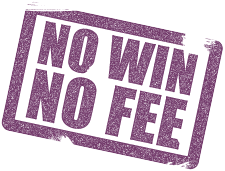This website uses cookies so that we can provide you with the best user experience possible. Cookie information is stored in your browser and performs functions such as recognising you when you return to our website and helping our team to understand which sections of the website you find most interesting and useful.
Top 8 Hazards For Cleaner Injuries At Work
Last Updated on June 19, 2025 by tanya
Top 8 Hazards For Cleaner Injuries At Work
Get Expert Advice On How To Claim
The cleaning industry is essential across many sectors which can pose hazards, here are the top 8 hazards for cleaner injuries at work. While employers are required to follow strict protocols when it comes to safety for employees, injuries can and do happen.
Cleaners service a huge range of industries, from offices and hospitals to shopping centres and schools and many in between. So, if you are a cleaner and have been injured at work through no fault of your own, you may be able to file for compensation.
If this has happened to you, or a loved one, at work due to someone else’s negligence, reach out to First Personal Injury for help. We work with experienced lawyers who operate on a ‘No Win, No Fee’ basis.
Top Hazards That May Cause an Injury
Cleaners often face risky conditions at work and there are several red flags that indicate an increased risk of injury. These include:
1 Slippery or Wet Floors
One of the most common hazards for cleaners is slipping on wet or freshly mopped floors. Employers should provide adequate warning signs about wet surfaces.
If these signs are missing or improperly placed, cleaners may be at risk of slipping. This can cause serious injuries such as fractures or head trauma.
2 Exposure to Harmful Chemicals
Cleaners frequently handle cleaning agents and disinfectants that may contain hazardous chemicals. If employers fail to provide proper training on how to use these substances safely, cleaners may suffer. This may include chemical burns, respiratory problems, or allergic reactions.
3 Lack of Personal Protective Equipment (PPE)
PPE such as gloves, masks, and non-slip footwear are a must for cleaners to prevent injuries. If an employer fails to supply the necessary protective gear, or does not enforce its use, cleaners are at a higher risk of injury or illness.
4 Manual Handling and Heavy Lifting Risks
Cleaners often need to lift heavy equipment, move furniture, or carry large waste bags. Without proper manual handling training or mechanical aids, they are at risk of musculoskeletal injuries. They could sustain back strains, herniated discs, and sprains.
5 Inadequate Training and Supervision
Lack of proper training is a significant risk factor. Cleaners must be educated on safe cleaning procedures, correct lifting techniques, and how to handle hazardous substances. Poor supervision can also lead to accidents due to improper work practices.
6 Working in Confined or Poorly Lit Spaces
Cleaning in dimly lit areas or confined spaces increases the likelihood of tripping over objects, bumping into obstacles, or experiencing fatigue-related accidents. Employers must ensure that cleaners have proper lighting and safe working conditions.
7 Faulty or Inadequate Equipment
Defective or poorly maintained cleaning equipment can pose significant hazards. For example, a faulty vacuum cleaner may overheat and cause burns. Or a damaged mop bucket may lead to water spills, increasing the risk of slips.
8 Working at Heights
Some cleaning jobs require working at heights, such as cleaning windows or high shelves. Without proper ladders, scaffolding, or harnesses, a cleaner may fall from leading to severe injuries.
When You Can Make a Claim for Compensation
If you are injured at work due to employer negligence or unsafe working conditions, you may be eligible to make a personal injury claim. Below are some key examples of employer negligence by not implementing proper safety measures:
- Failing to provide PPE
- Not offering adequate training
- Ignoring safety regulations
- Not maintaining cleaning equipment properly
- Unsafe work environment
- Exposure to dangerous substances
Steps to Take If You Are Injured at Work
If you suffer an injury while working as a cleaner, you should immediately inform your employer and ensure it is documented in the accident book. Keep all medical records of treatment you received after sustaining the injury.
Take photos of the hazard and collect witness statements if possible. You will need to speak to a personal injury lawyer who can guide you on whether you have a valid claim. Compensation typically covers your medical expenses, lost wages and pain and suffering.
At First Personal Injury, we partner with expert lawyers who work on a ‘No Win, No Fee’ basis. Contact our team today at 0333 358 2345 or get in touch online for a free, no-obligation consultation to find out if you have a potential claim.
